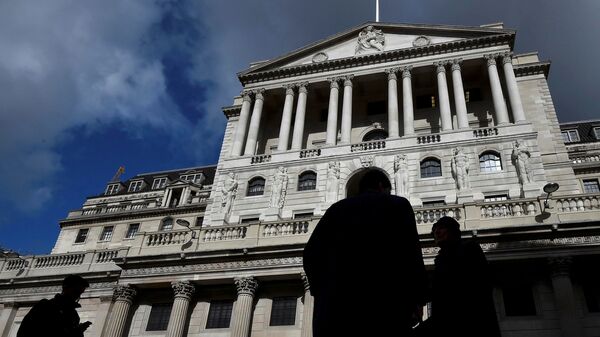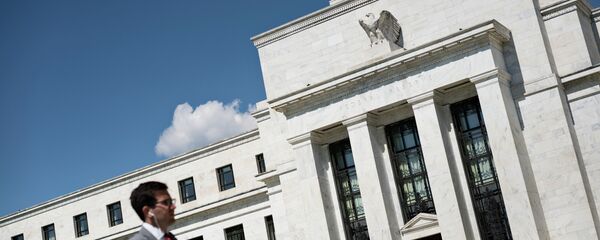Kristian Rouz – The British economy grew 0.5 percent quarter-on-quarter in the three months up to October, accelerating from the 0.4-percent Q3 growth, and outpacing earlier predictions, which also stood at 0.4 percent. This could support the case for another Bank of England (BoE) interest rate hike after the benchmark borrowing cost rose to 0.5 percent from 0.25 percent earlier this month.
We have raised interest rates to 0.50% — find out more at https://t.co/t3kXo2DpBQ #InflationReport pic.twitter.com/xOPSF2wMdI
— Bank of England (@bankofengland) November 2, 2017
However, British manufacturing posted a solid month of expansion in September, and it is poised to gain momentum amidst the strengthening international demand for manufactured goods. A separate report published Friday suggests the robust industrial production could offset the tepid consumer demand and shrinking construction through the year-end.
Much like the rest of us, the economy has its ups and downs. But can it grow too quickly? #BoEknowledgebank explores https://t.co/7lzQGzZ0Kq pic.twitter.com/FktnEcyfE5
— Bank of England (@bankofengland) November 7, 2017
UK industrial and manufacturing output rose by 0.7 percent in September, a separate report from the Office for National Statistics (ONS) said. Total industrial production constitutes 14 percent of the UK’s GDP.
“Stronger global growth and the effect of the weaker pound seems to be finally showing through in the UK manufacturing numbers,” James Smith of the Dutch lender ING Group says.
The UK’s latest rate of economic expansion, and the still-high inflation suggest the BoE will look at another interest rate hike soon.
"We expect the pattern of demand in the UK economy to rebalance towards international trade in response to strengthening global growth and weaker sterling and away from domestic demand," Amit Kara of National Institute of Economic and Social Research (Niesr) says.
Accelerating British exports might suggest certain sectors of the economy are overheating, against the backdrop of stagnation or contraction in other sectors. Another BoE rate hike – to 0.75 percent – could fix this problem.
READ MORE: UK Economic Health in Doubt as Bank of England Nears Rate Hike
The UK trade deficit narrowed by a much higher margin than expected to £11.253 bln in September from £12.350 bln, the ONS said
Niesr experts say the BoE is likely to raise base borrowing costs every six months from this point on, considering the longer-term projections of the British economic expansion. This means UK borrowing costs could increase to 2 percent by early 2021.
The UK’s retailers also reported their worst month for sales in a decade in October, despite the Christmas holiday season being just around the corner. In such an environment, the central bank is expected to closely monitor the upcoming developments before moving interest rates again.
“Given that manufacturing represents a relatively small share of the UK economy, the persistent weakness in consumer spending is a bigger consideration for the Bank of England,” ING’s Smith says.
Meanwhile, the European Commission said Friday the UK economy is poised to slow in the coming three years to just above 1 percent annualised growth. Albeit far-fetched, such forecasts affect the sentiment of UK businesses and consumers alike.
Seven centuries of bond market data suggests reversals in real rates can be rapid when cycles turn. https://t.co/OVjCWMEjAe #BankUnderground pic.twitter.com/78A5SG9BiH
— Bank of England (@bankofengland) November 6, 2017
Britain’s negotiations with the EU over the Brexit process have faltered for months, resulting in a heightened economic uncertainty in the UK, exacerbated by the political turmoil, and unclear path of fiscal policies.
READ MORE: Officials Warn UK 'Not Ready' for Looming Rate Hike
Chancellor of the Exchequer Philip Hammond will deliver his budget by 22 November, and next week’s reports on salary growth, post-rate hike inflation, and consumer purchases will all be accounted for in the proposed budget. If the data disappoints, HM’s Cabinet will be more inclined to either abandon parts of its austerity policies, or implement a partial fiscal stimulus.




